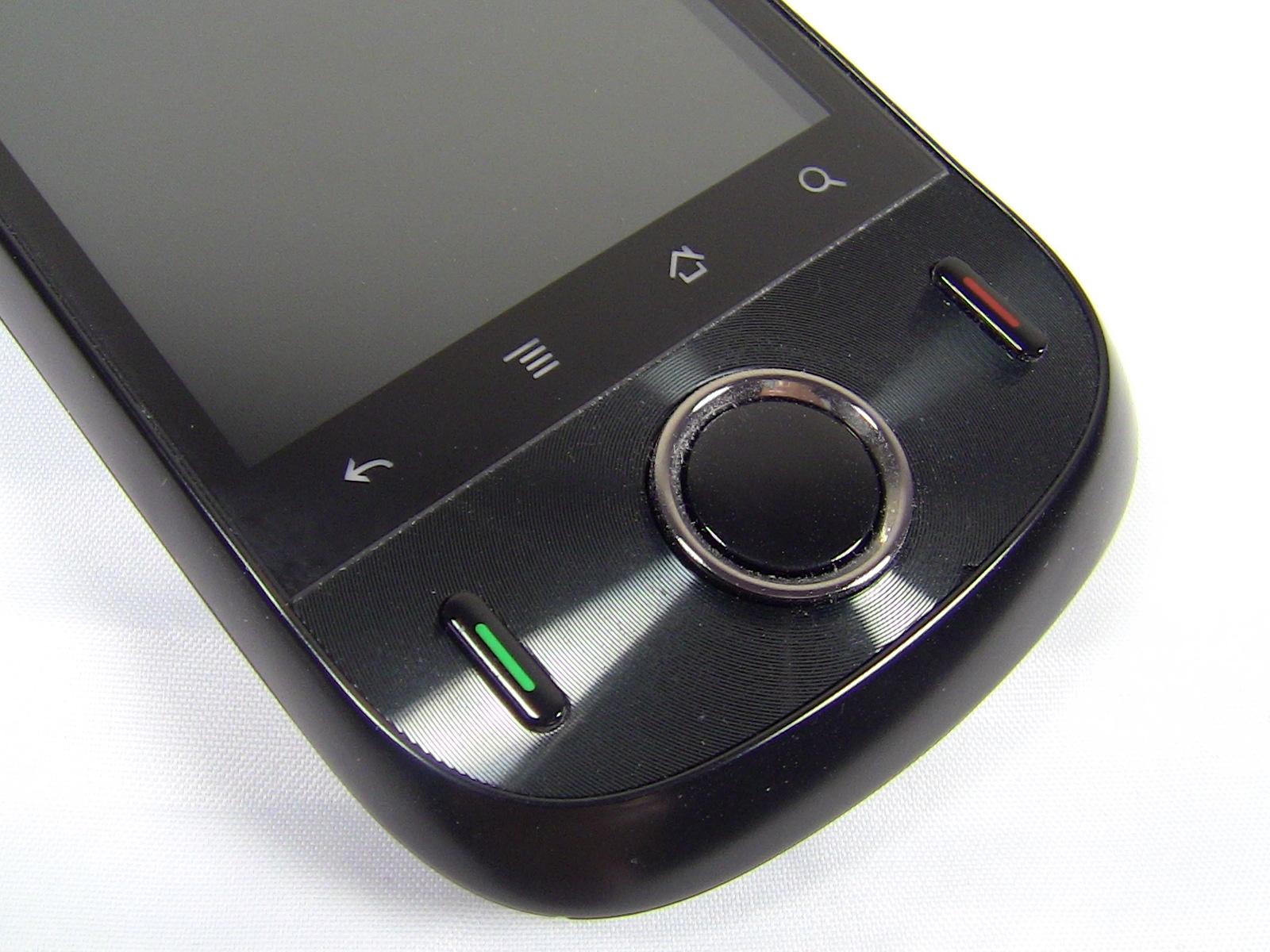In an attempt to snag first-time smartphone buyers, carriers are increasingly focusing their attention, not on beast smartphones with through-the-roof specs, but on low-end and mid-range smartphones that are a little less intimidating to those who've never owned one before. In a way, this seems great; however, low-end means just that, low-end. It means you're getting a processor, display, and camera that can hardly be called an upgrade from a simple featurephone. The Comet is one such device and I can't say I'm impressed, but is it still a worthy contender in the smartphone market?
The Comet, made by Huawei, is a pretty small device, measuring only 4.1-inches tall, 2.2-inches wide, and .5-inches thick. Weighing in at 3.6 ounces, it's not very heavy, but it still feels like a solid device. I would like for it to be a little bigger, just so you could have more real estate for the display. As it is, the display measures a mere 2.8-inches diagonally.
Granted, a large portion of the front panel is taken up by an oversized navigation pad (something I feel to be unnecessary considering the fact that the device has a perfectly decent touchscreen) and two tall and skinny buttons for Calls/Send and End. My problem isn't the fact that you're given these buttons, it's how much space they take up - space that could be used for a larger display.
The left side of the device contains only the volume rocker, the right side is empty, and the top of the device houses the 3.5mm headphone jack and Power/Screen Lock button. The microUSB charging port is on the bottom of the Comet. The camera is, of course, on the back. There are two speaker grills next to the camera that make you think the camera has a flash. Alas, it does not. These were just placed there to give you hope, I suppose. Or maybe they just like the way it looked.
Contrary to how it may sound, I did not hate the Comet. Yes, I do have a few qualms about its overall design, but, as I stated in the introduction, performance was not as bad as you may expect, especially once you find out that the Comet is powered by a 528 MHz processor. Yes, 528. Why they didn't just stick with 500 or take the leap to 600 MHz is beyond me, but this is probably the most specific you'll ever see a company get with their processor speed.
Overall, performance was okay. Transitions were smooth, scrolling around was easy, and even zooming in and out wasn't too bad. Load times were a little bit slower, but only by a few seconds. The only time you're going to notice some serious lag is if you have multiple apps running, which is generally a constant on Android. In order to keep this in check, I would recommend downloading some sort of task manager from the Market. There are several good ones that are free. If you keep your currently running apps in check, speeds will be just at the level that will keep you comfortable. The Comet does ship with Android 2.2, which kind of makes me feel better about it, but we're not sure about any future updates.
I mentioned earlier how small the display is, 2.8-inches. Not only is it small, it also has a low resolution, 240 x 320. If that number sounds familiar, it's because it's the same resolution found on most featurephones today. Now, I'm not a smartphone snob that requires a Super AMOLED display on all devices, but I do wish the resolution was a little better. Text is pretty pixelated and pictures look rough. This may not bother you, but it's worth noting. Also, because the screen is so small, the keyboard is absolutely tiny. Having Swype pre-installed is nice and if you're not acclimated to it yet, I would recommend getting used to it. It's really the only way to type on such a small screen.
The Comet's 3.2 MP camera doesn't pack anything impressive in terms of specs, but it does capture video and delivered okay quality pictures, great for snapshots and quick photos. The device does come pre-installed with a 2 GB microSD card and supports up to 32 GB.
The phone ships with a 1200 mAh battery that offered pretty good usage time. I easily made it through an entire day, probably because I used a task manager so frequently to make sure I didn't have several apps running. With moderate use, the battery lasted about a day-and-a-half before I had to charge it again.
Like I said earlier, I didn't hate the device. Yes, there were some design quirks that I didn't really understand and I wish it had a larger display with a higher resolution, but performance and speeds were somewhat impressive. Admittedly, however, T-Mobile has better options in the mid-range smartphone market. I would recommend looking at the LG Optimus T, which is also free. If As a consumer, I may even seriously contemplate getting a refurbished myTouch 3G Slide for 50 bucks before getting the Comet. However, if you like the design and the screen and display don't bother you, then you'll be plenty satisfied with it. If you're coming to it with a fresh perspective though, look elsewhere.

The Good: Inexpensive (free, to be exact); Swype pre-installed; Good battery life.
The Bad: Slow processor can't handle multiple apps running at once; Poor screen resolution; Tiny screen and tiny keyboard; Unimpressive 3.2 megapixel camera.
The Verdict: The Comet is a decent low-end smartphone and performance isn't as bad as you would expect, but there are better low-end options on T-Mobile in the same price-range.